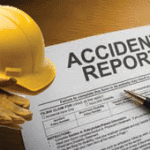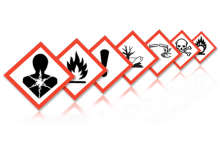 OSHA’s Latest Recordkeeping Rule – Be Ready January 1st 2015
OSHA’s Latest Recordkeeping Rule – Be Ready January 1st 2015
In September of this year, the Occupational Safety and Health Administration (OSHA) announced a final rule requiring employers to notify OSHA when an employee is killed on the job or suffers a work-related hospitalization, amputation or loss of an eye. The rule, which also updates the list of employers partially exempt from OSHA record-keeping requirements, will go into effect on Jan. 1, 2015, for workplaces under federal OSHA jurisdiction. This is a major change in the recordkeeping requirements.
U.S. Secretary of Labor Thomas E. Perez and the Assistant Secretary of Labor commented that these new requirements will help OSHA focus its resources and hold employers accountable for preventing them. This new data will enable the agency to identify the workplaces where workers are at the greatest risk and target our compliance assistance and enforcement resources accordingly.”
Below are some questions and answers pertaining to the new rule.
Who is required to keep records? Who is exempt from recordkeeping?
OSHA regulations require certain employers to routinely keep records of serious employee injuries and illnesses. However, there are two classes of employers that are partially exempt from routinely keeping records. First, employers with ten or fewer employees at all times during the previous calendar year are exempt from routinely keeping OSHA injury and illness records. OSHA’s revised recordkeeping regulation maintains this exemption.
Second, establishments in certain low-hazard industries are also exempt from routinely keeping OSHA injury and illness records. Since 1982, this list has been comprised of establishments in the divisions of retail trade; finance, insurance and real estate; and the service industry if the three year average lost workday case rate for their major industry group was 75 percent or less of the overall three year average of the lost workday case rate for private industry. OSHA’s revised recordkeeping regulation provides an updated list of low-hazard industries that are exempt from routinely keeping OSHA injury and illness records. The new list of exempt industries is now classified by North American Industry Classification System (NAICS), which is the standard used by Federal statistical agencies in classifying business establishments for the purpose of collecting, analyzing and publishing statistical data related to the U.S. business economy. The injury and illness rate threshold is based on more recent BLS data. The new list of partially exempt and newly required establishments can be found by clicking here & then scroll down through the PDF.
What needs to be reported to OSHA?
OSHA’s updated recordkeeping rule expands the list of severe injuries that employers must report to OSHA.
As of January 1, 2015, all employers must report
- All work-related fatalities
- All work-related inpatient hospitalizations of one or more employees
- All amputations
- Loss of an eye
What information do I report to OSHA?
You must give OSHA the following information for each fatality, in-patient hospitalization, amputation, or loss of an eye:
- The establishment name
- The location of the work-related incident
- The time of the work-related incident
- The type of reportable event (i.e. fatality, in-patient hospitalization, amputation, or loss of an eye)
- The number of employees who suffered a fatality, in-patient hospitalization, amputation, or loss of an eye
- The names of the employees who suffered a fatality, in-patient hospitalization, amputation, or loss of an eye
- Your contact person and his or her phone number
- A brief description of the work-related incident
When do I need to report to OSHA?
- You must report fatality within 8 hours
- You must report any in-patient hospitalization of one or more employees, amputation, or loss of an eye within 24 hours
Only fatalities occurring within 30 days of the work-related incident must be reported to OSHA. Further, for an in-patient hospitalization, amputation or loss of an eye, these incidents must be reported to OSHA only if they occur within 24 hours of the work-related incident.
How do I report these events?
You have three options for reporting the event:
- By telephone to the OSHA Area Office nearest to the site of the work-related incident
- By telephone to the 24-hour OSHA hotline (1-800-321-OSHA or 1-800-321-6742)
- Electronically, using the event reporting application that will be located on OSHA’s public website
Here are some helpful links to forms:
OSHA’s Log of Work-Related Injuries and Illnesses
OSHA’s Employee Report of Injury Form
Here are two quick/helpful OSHA Fact Sheets which overview the new requirements and the events covered in the new rule.
https://www.osha.gov/recordkeeping2014/OSHA3744.pdf
https://www.osha.gov/recordkeeping2014/OSHA3745.pdf













